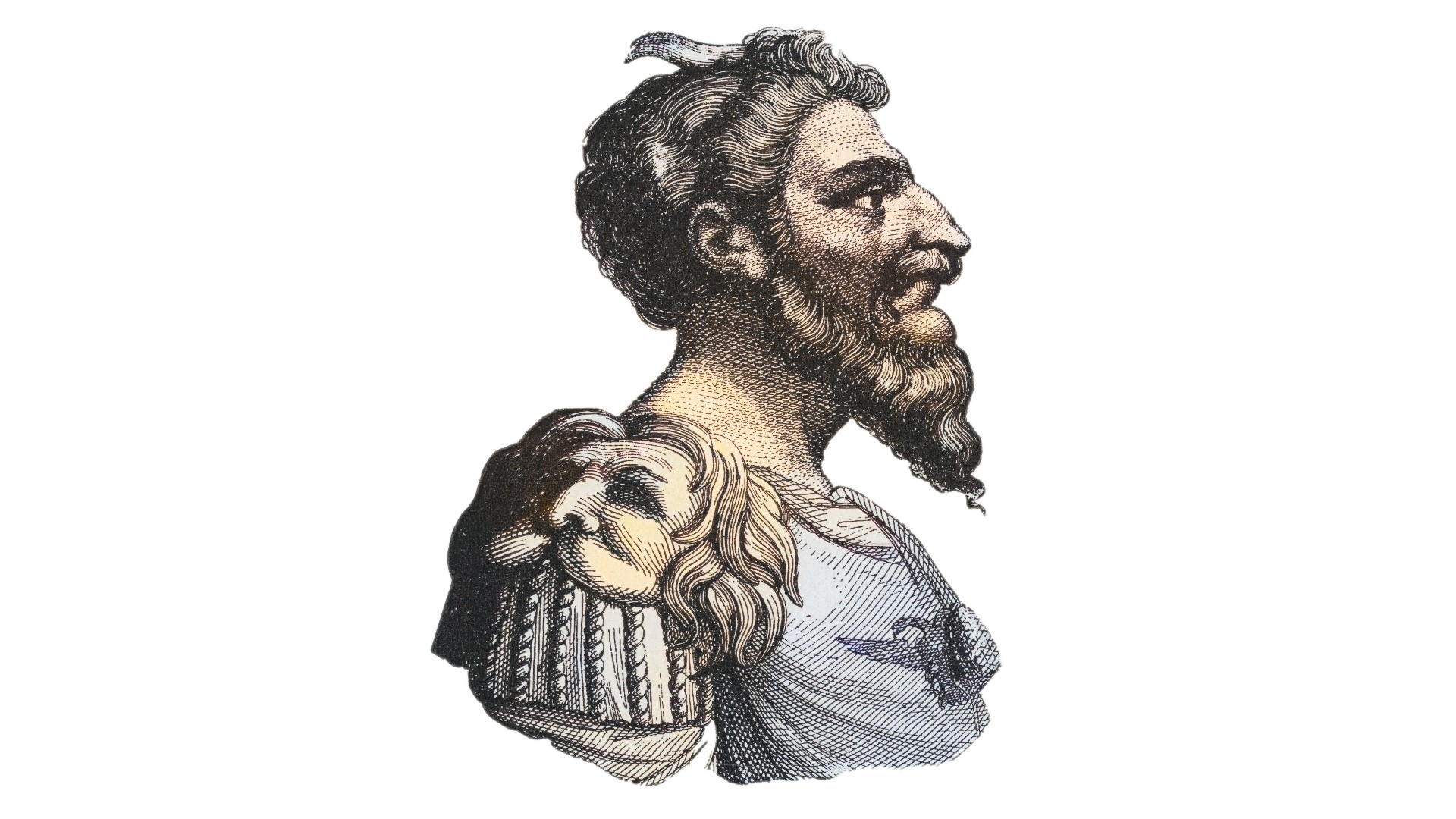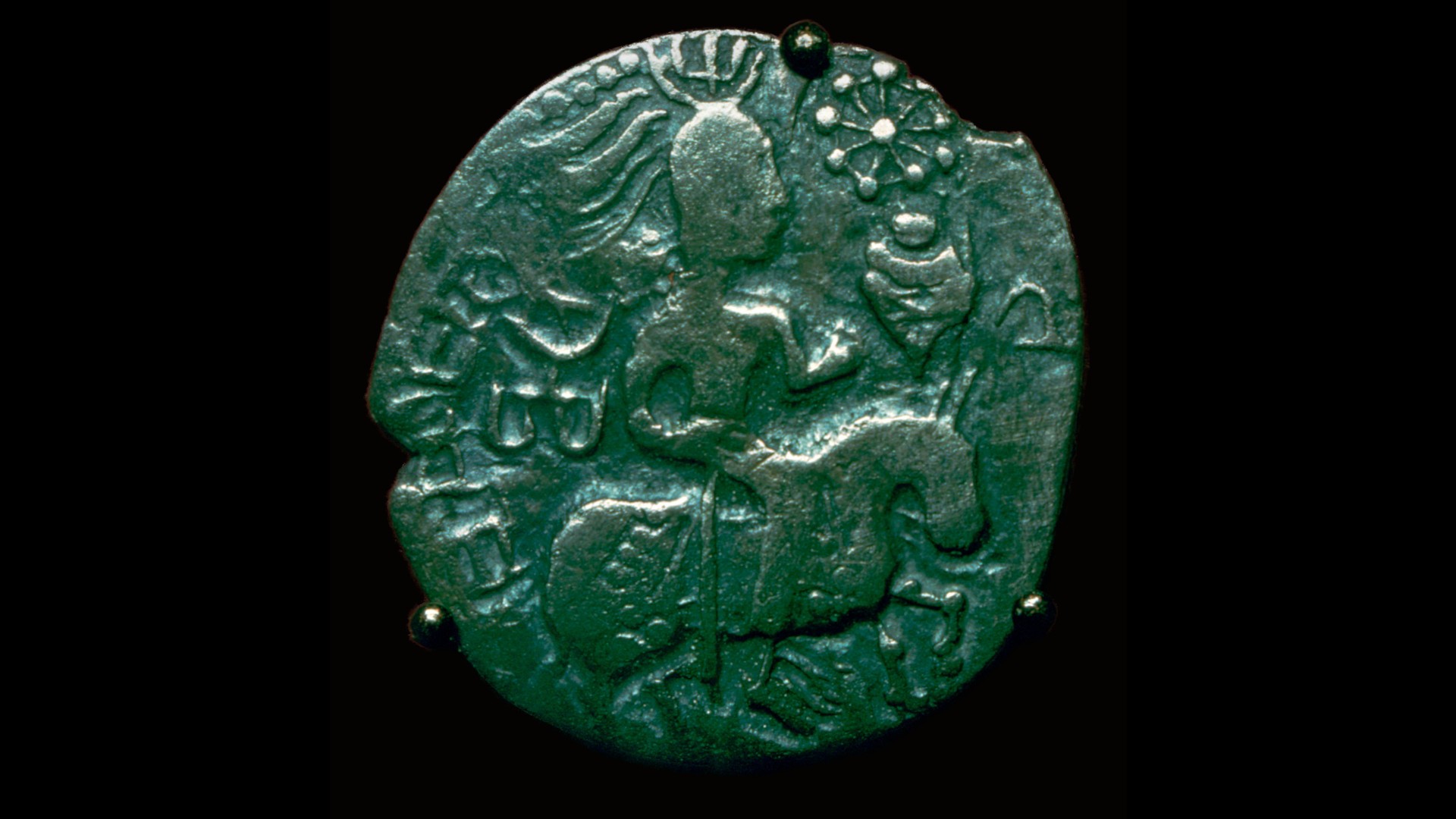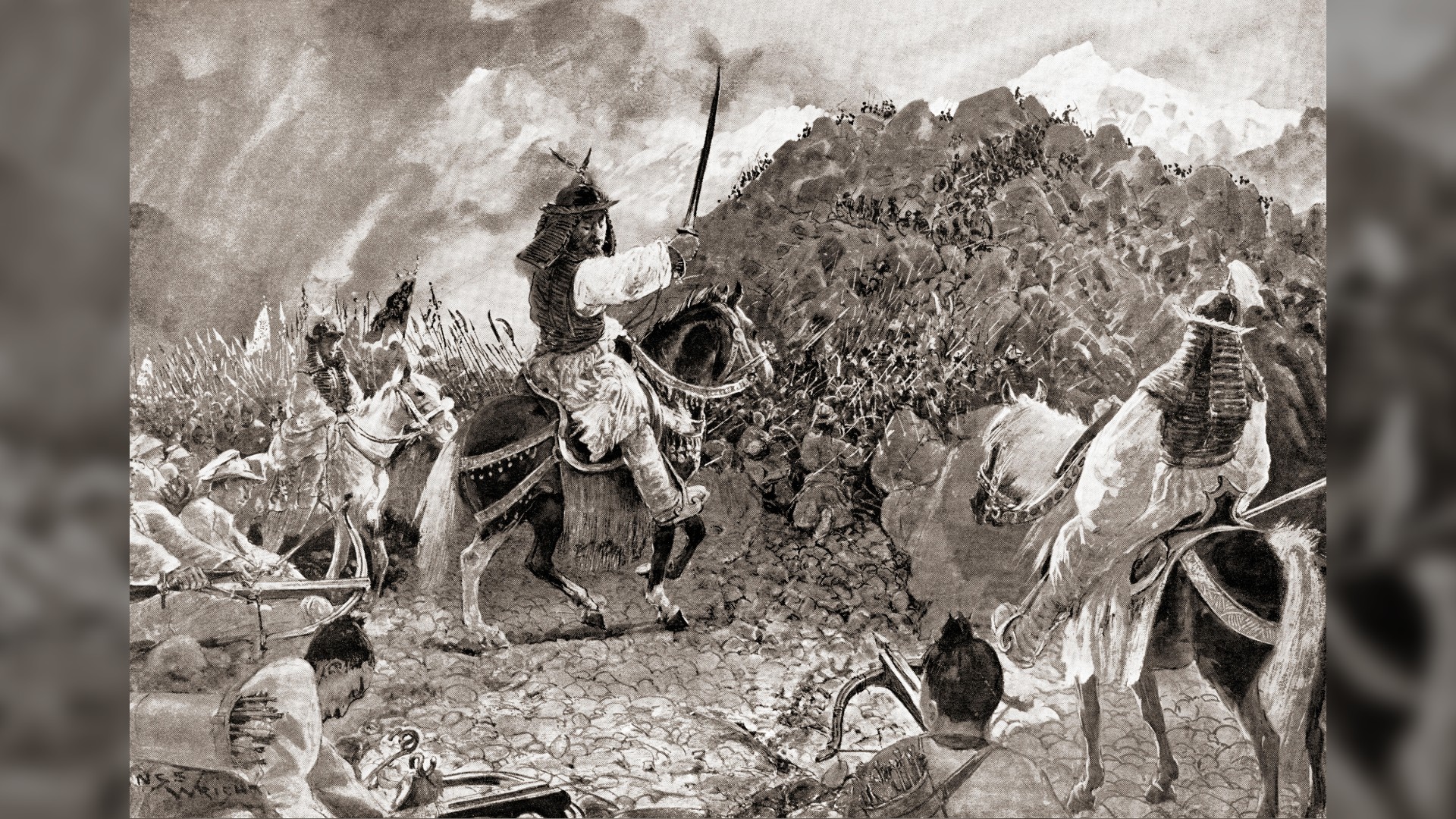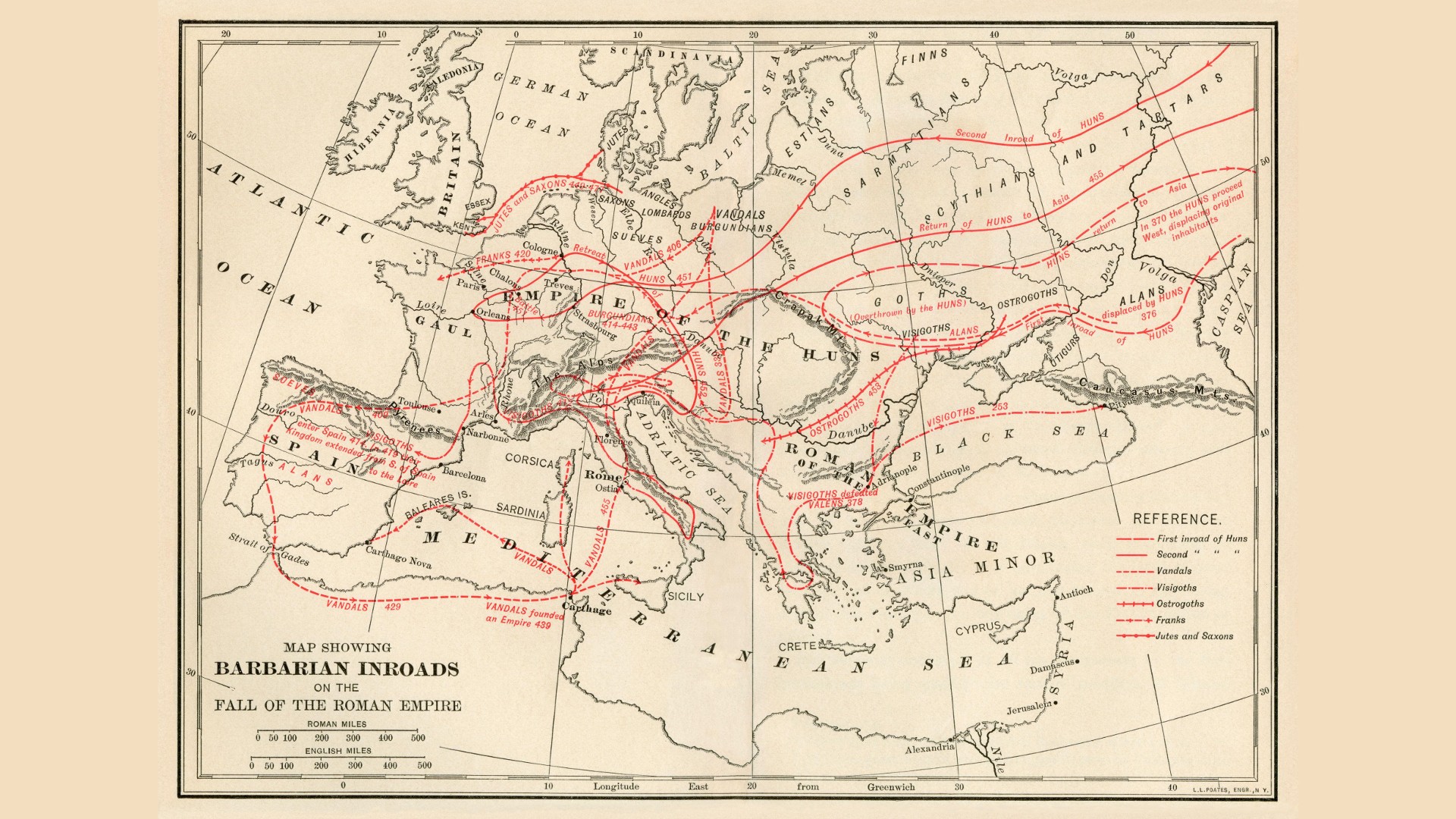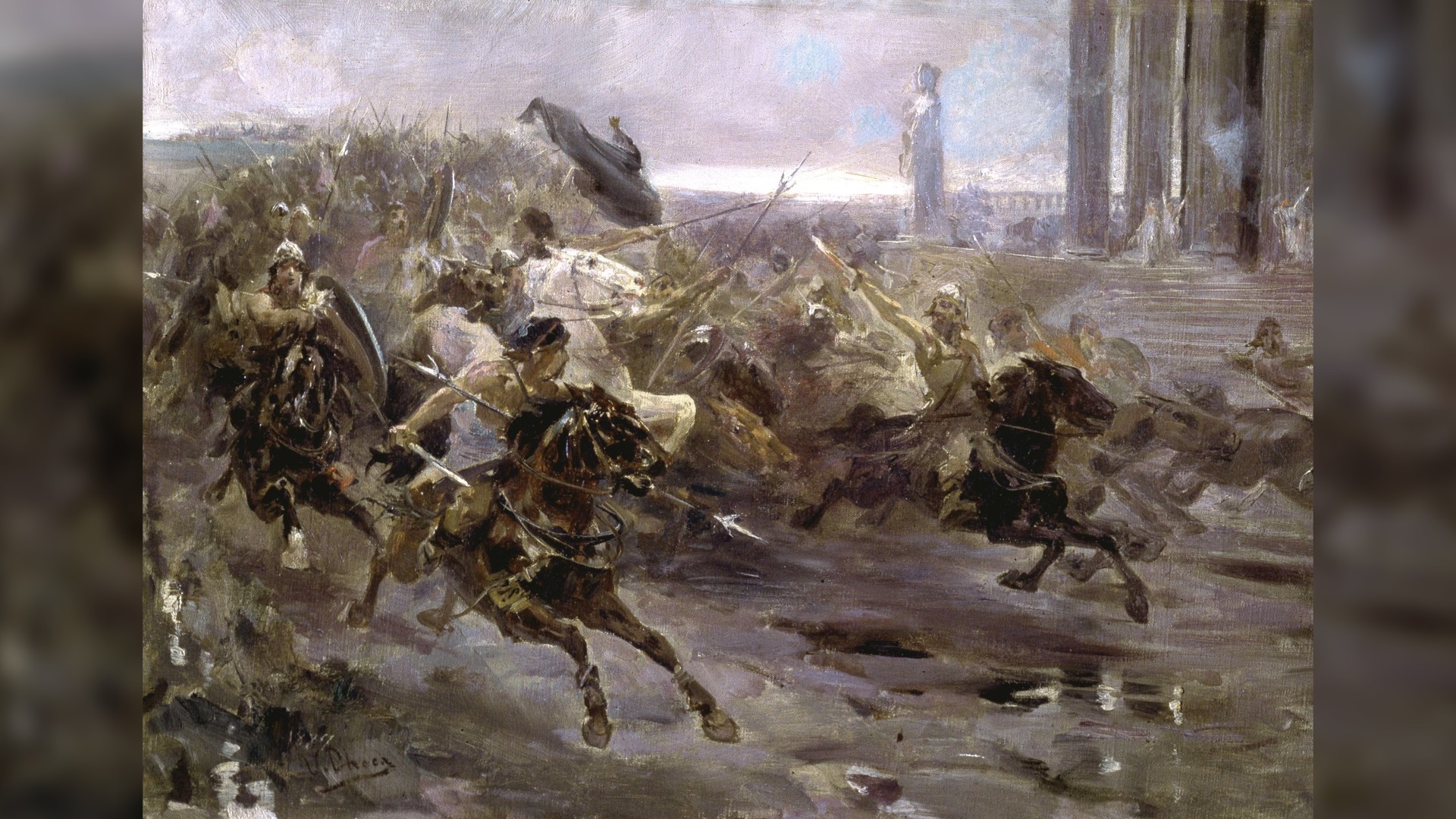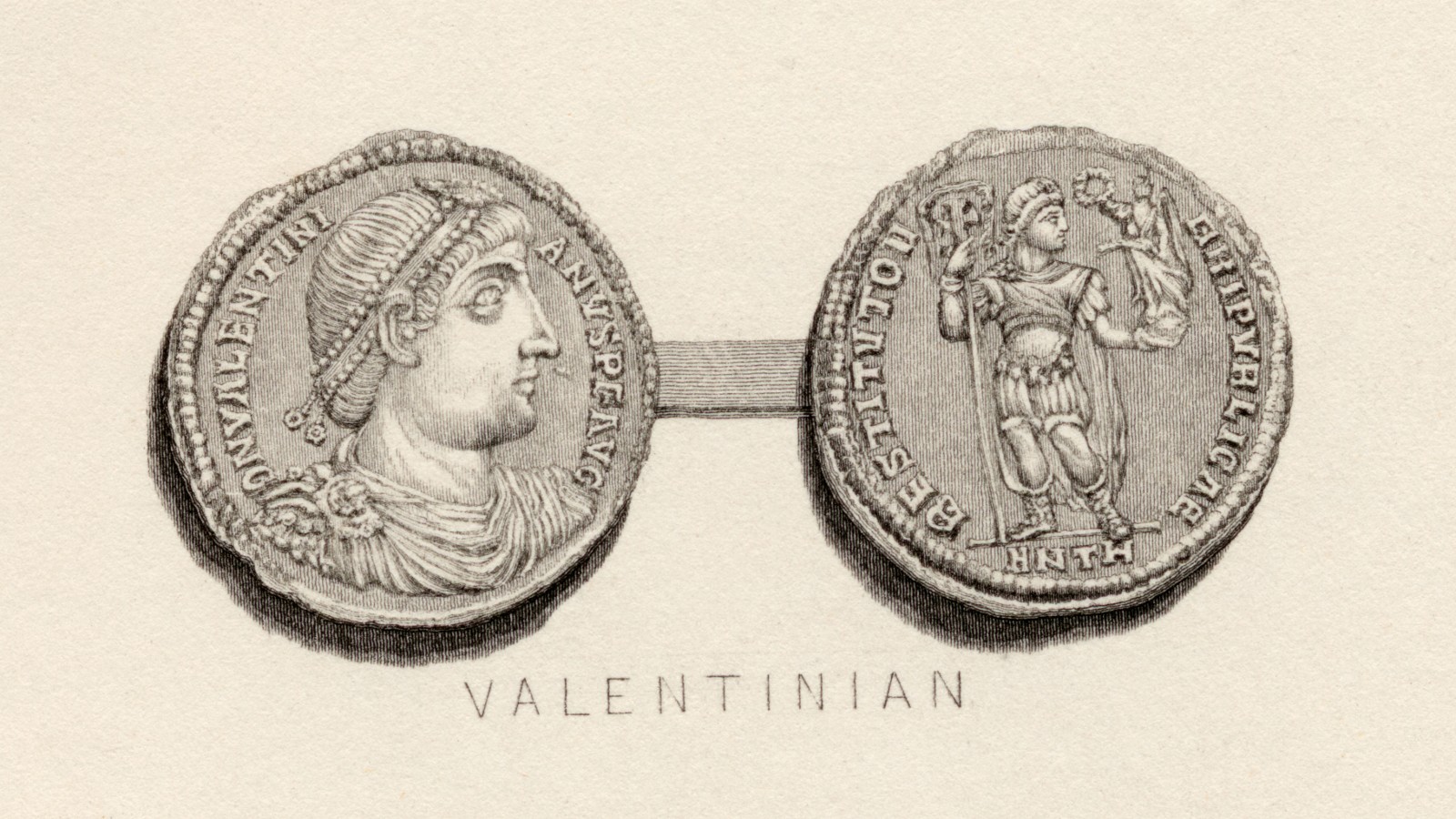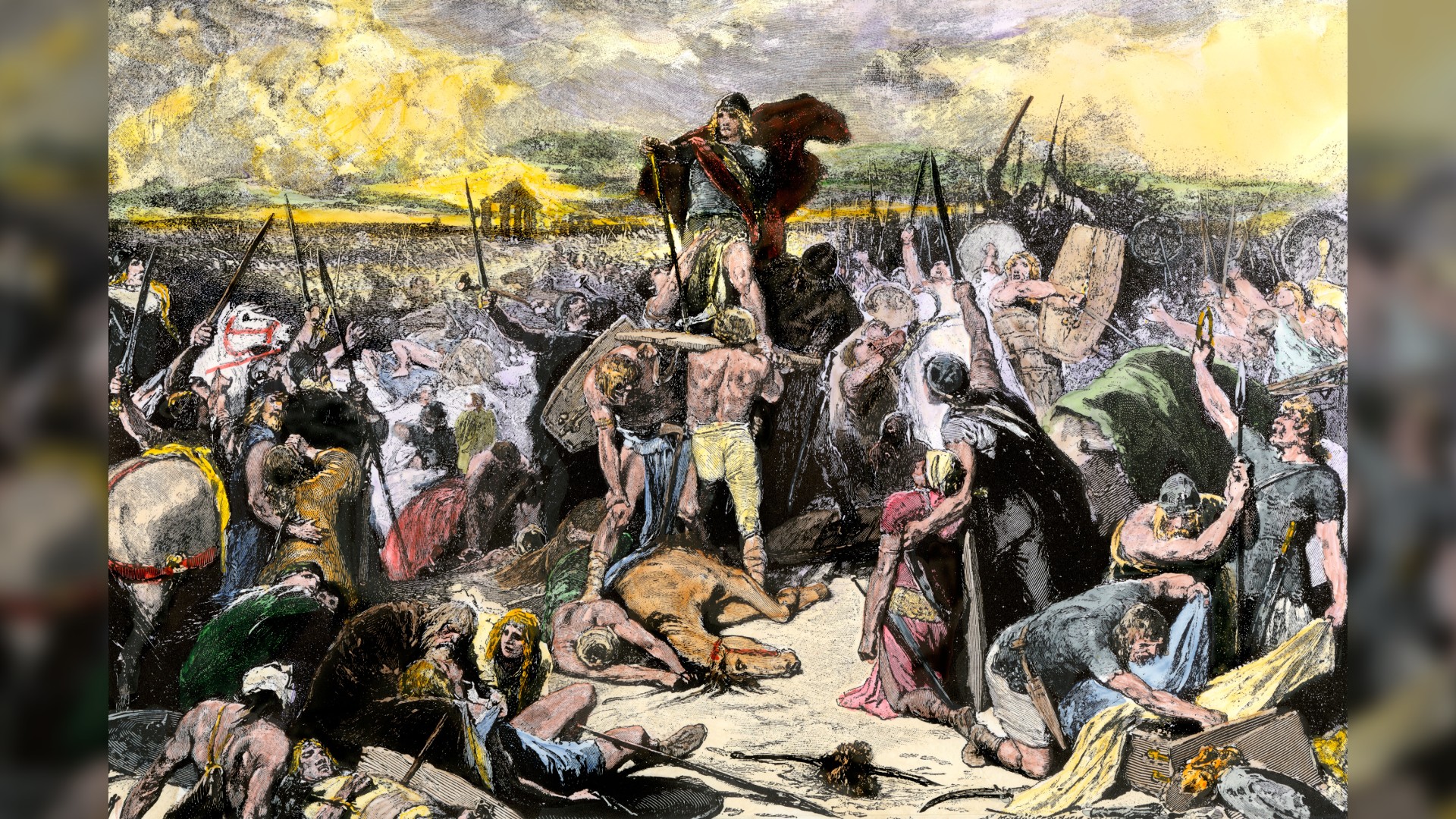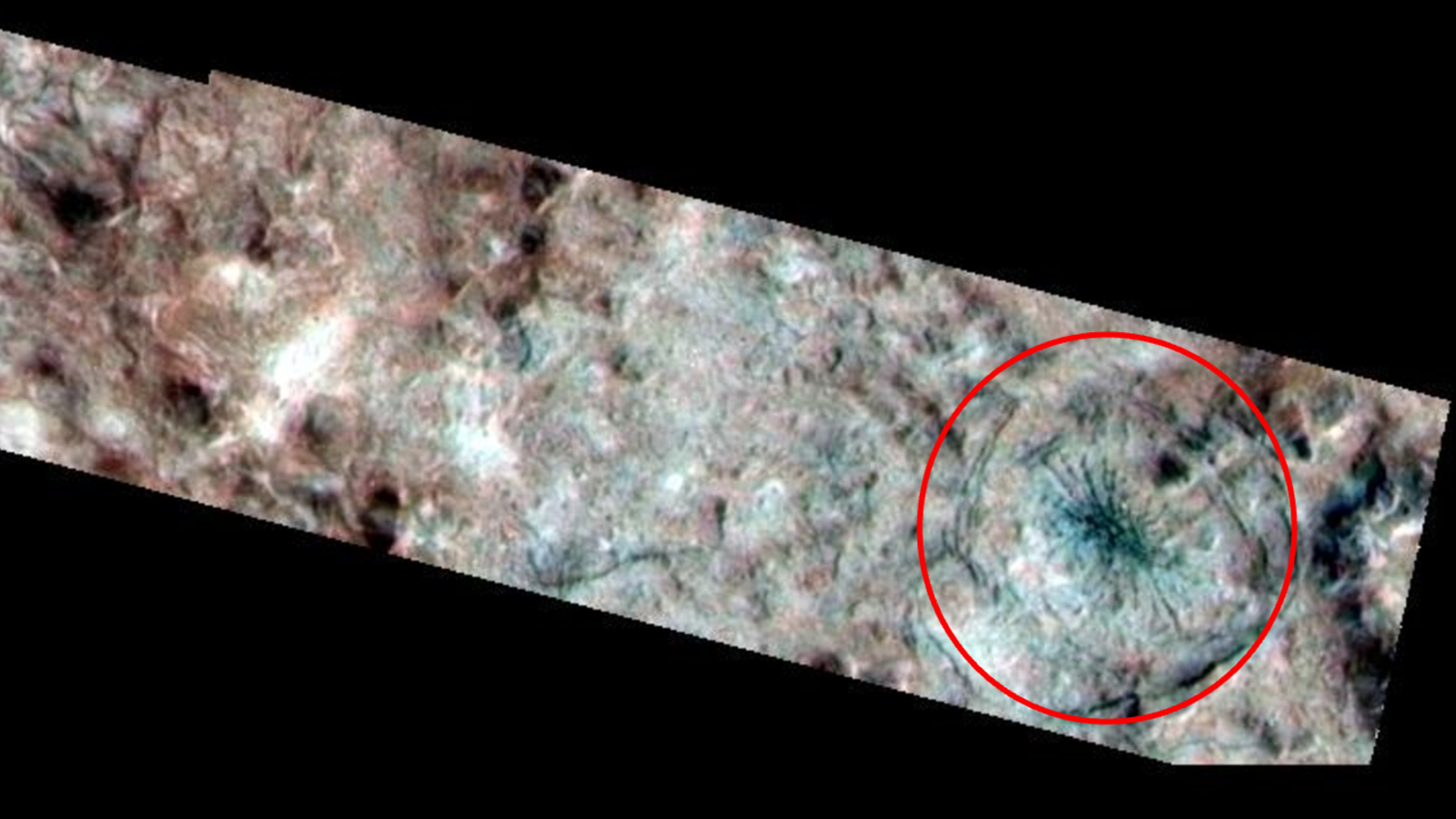Who were the Huns, the nomadic horse warriors who invaded ancient Europe?
The Huns, fearsome nomads, helped destroy the Roman Empire.
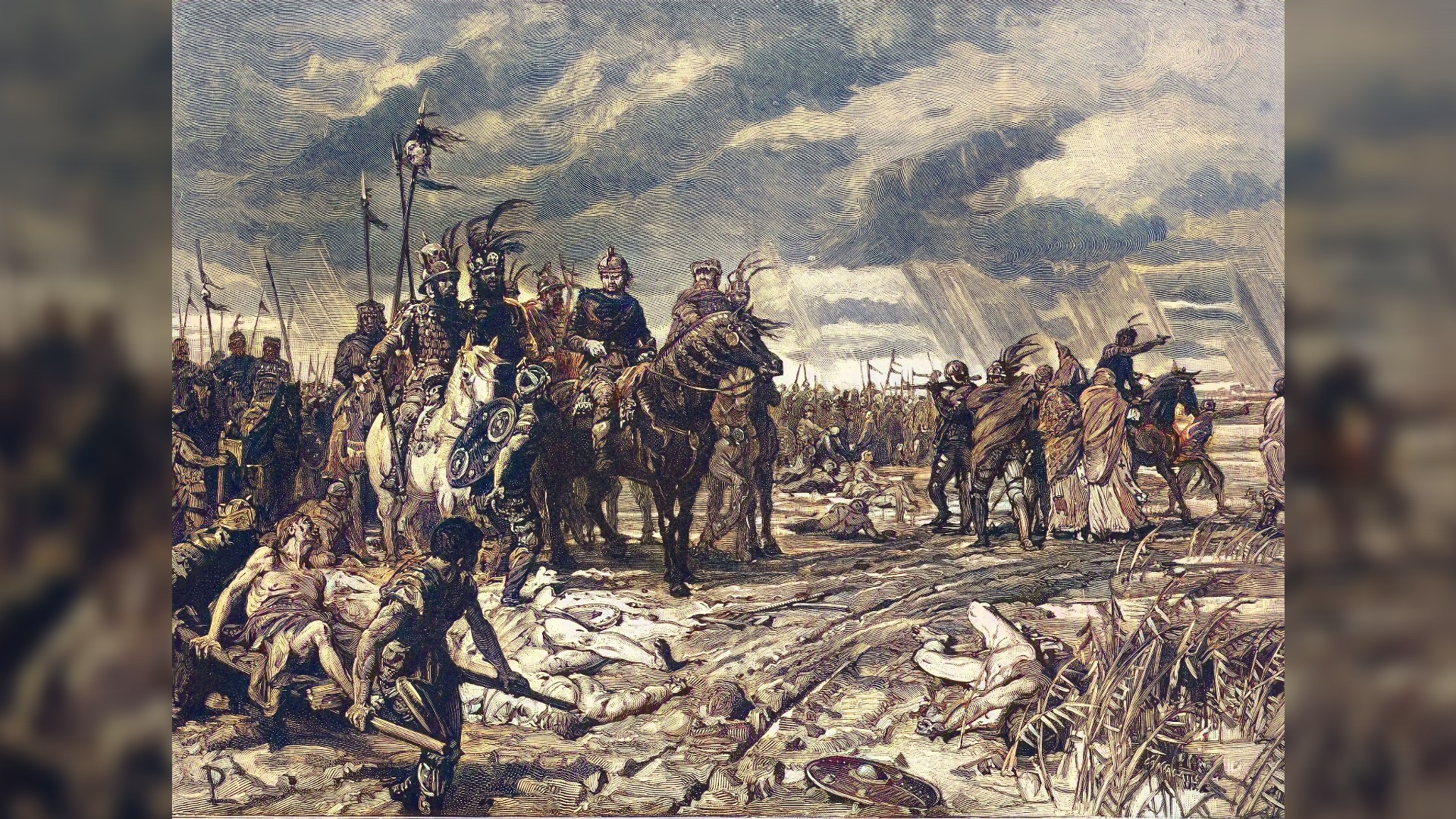
The Huns were nomadic warriors, likely from Asia, who are best known for invading and terrorizing Europe in the fourth and fifth centuries A.D. and hastening the downfall of the Western Roman Empire. They were expert horsemen known for their ferocity in battle and their ruthlessness toward conquered peoples.
Under their brilliant military leader Attila (A.D. 406 to 453), known by Christians of the time as "the scourge of God," the Huns carved out a huge empire that encompassed large swaths of present-day Russia, Hungary and other parts of Europe, including Germany and France. Attila's army became so powerful that both the Western and Eastern Roman Empires regularly paid tribute to keep these warriors from attacking and plundering Roman provinces. But the Huns' empire didn't last. After Attila's death, the empire was divided between his three sons, who fought one another and were unable to keep the empire intact.
Today, the name "Hun" is synonymous with any barbaric, uncouth and destructive person, and the term conjures up images of mounted warriors involved in acts of abject cruelty, brutality and bellicosity. For centuries, this stereotype, which originated with Roman writers who suffered from the Huns' depredations, was the dominant image of the Huns. But the story of the Huns is much more complex than these images suggest.
Origin of the Huns
The Huns' origins are unclear, but recent genetic and linguist studies offer some clues. According to World History Encyclopedia, the Roman historian Tacitus is one of the first Western writers to mention the Huns. Writing in the latter part of the first century A.D., Tacitus described them as originating near the Caspian Sea, in what is now Kazakhstan. Tacitus called them the "Hunnoi," though it is not known what the Huns called themselves as they did not possess a written language. Tacitus did not distinguish the Huns much from the other tribes in the region, nor did he categorize them as particularly warlike.
The most notable Roman writer to describe the Huns in some detail was the historian and soldier Ammianus Marcellinus (A.D. 330 to 395), though his descriptions are flavored with a heavy dose of bias. In his work of later Roman history, called Res Gestae ("Things Done"), which covers the period from A.D. 96 to 378, Ammianus characterized the Huns as "a race savage beyond all parallel," and stated that their place of origin was "beyond the sea of Azov, on the border of the Frozen Ocean." It is not clear which ocean Ammianus was referring to, but the area immediately beyond the Sea of Azov is located in the Pontic-Caspian steppe — a flat grassland ecosystem, or steppeland — in modern-day Ukraine and southern Russia, bordering the Caucasus Mountains to the south.
Ammianus was less than flattering in his physical description of the Huns, portraying them as stereotypical "barbarians" with scarred faces and large body sizes, and even suggesting they resembled stumpy bridge posts.
Ammianus, however, praised the Huns' equestrian skills, and attributed those skills to a life spent in the saddle: "From their horses by night or day every one of that nation buys and sells, eats and drinks, and bowed over the narrow neck of the animal relaxes into a sleep so deep as to be accompanied by many dreams" (translation from the University of Chicago).
Get the world’s most fascinating discoveries delivered straight to your inbox.
Most scholars today suggest the Huns came from Asia.
"The Huns were thought to have been originally a Mongolian people," Ralph Mathisen, a professor of history, classics and medieval studies at the University of Illinois Urbana-Champaign, told Live Science. Prior to Tacitus, the earliest information on the Huns comes from Chinese sources. "There are a people called the Xiongnu who are often identified as the Huns," he said.
According to Britannica, the Xiongnu were a loose confederation of mounted, nomadic peoples from northeastern Asia who appear in Chinese records as early as the fifth century B.C., when they began to raid the northern territories of China. They continued their attacks over the next few hundred years. These raids prompted the first emperor of a unified China, Qin Shi Huang, to begin building the Great Wall of China in an attempt to keep out the northern invaders. At first, the raids were sporadic, but by the end of the third century B.C., the Xiongnu formed a great tribal league that began to threaten Chinese civilization. This league carved out a far-reaching empire that covered much of present-day Mongolia and Siberia and stretched west to the Pamir Mountains in Central Asia. A series of wars erupted between the Chinese and the Xiongnu, and eventually, in 51 B.C., the Xiongnu empire split into two bands: an Eastern group, which submitted to the Chinese, and a Western group, which was driven into Central Asia.
"As these people moved west, they picked up other peoples along the way, like the Alans and the Gepids, and they created what is called a 'horde,'" Mathisen said. "This horde is the Huns as well as all the people they have accumulated."
A 2018 study published in the journal Nature found that, genetically, the Huns were a mixture of East Asian and West Eurasian peoples. Specifically, the authors' conclusions strongly suggest that the Huns were descended from Xiongnu peoples, themselves a heterogenous mixture of various East Asian groups, and that as they moved westward, they incorporated West Eurasian peoples, such as the Scythians.
In slight contrast, a 2025 study in the journal PNAS found that the Huns were a motley crew of mixed origin, although they did confirm that a few had connections to the Xiongnu Empire in Mongolia. Most of the Huns had varying amounts of northeast Asian ancestry, the study found.
Another line of evidence connects the Huns with the Xiongnu: linguistics. Both the European Huns and the Xiongnu spoke the same Paleo-Siberian language, according to a 2025 study in the journal Transactions of the Philological Society. The team looked at loanwords, glosses, personal names and geographic names in their research. For instance, five loanwords in Turkic and Mongolic languages — including lake, rain, birch — seem to derive from Arin, a member of the Yeniseian language family in inner Asia. Hunnish names, including Atilla, can also be explained through Arin word formation patterns.
"We show that linguistic evidence from four independent domains does indeed suggest that the Xiōng-nú and the Huns spoke the same Paleo-Siberian language and that this was an early form of Arin, a member of the Yeniseian language family," the researchers wrote in the study.
Huns' art and culture
Very little is known about Hunnish society and culture. According to Ammianus, they were nomadic animal herders and "No one in their country ever plows a field or touches a plow-handle. They are all without fixed abode, without hearth, or law, or settled mode of life, and keep roaming from place to place, like fugitives, accompanied by the wagons in which they live; in wagons their wives weave for them their hideous garments, in wagons they cohabit with their husbands, bear children, and rear them to the age of puberty." (Translation from the University of Chicago.)
But archaeological evidence suggests that at least some Huns adopted a settled lifestyle and practiced agriculture. A biochemical analysis of bones and teeth from skeletal populations in fifth-century Hungary suggests that some Huns underwent a shift in diet, indicating a change from a predominantly nomadic diet (milk, meat and millet) to a sedentary agricultural diet (wheat, vegetables and a modicum of meat).
One Roman writer, whose work stands in contrast to Ammianus' depictions of the Huns as crude barbarians, is the fifth-century Byzantine historian Priscus, who, along with another diplomat named Maximus, visited the court of Attila in A.D. 448. He described Attila's residence as "...splendid. It was made of polished boards, and surrounded with wooden enclosures, designed not so much for protection as for appearance' sake." (Translation from Fordham University.)
Priscus and Maximus exchanged gifts with Attila's wife Kreka, who is described as reclining on a soft couch. "The floor of the room was covered with woolen mats for walking on. A number of servants stood round her, and maids sitting on the floor in front of her embroidered with colors linen cloths intended to be placed over the Scythian dress for ornament," Priscus wrote. (Translation from Fordham University.)
Later in the afternoon, Priscus was ushered into Attila's banquet hall for a feast, which he described as "A luxurious meal, served on silver plates, [which] had been made ready for us and the barbarian guests, but Attila ate nothing but meat on a wooden trencher. In everything else, too, he showed himself temperate —- his cup was of wood, while to the guests were given goblets of gold and silver. His dress, too, was quite simple, affecting only to be clean. The sword he carried at his side, the ratchets of his Scythian shoes, the bridle of his horse were not adorned, like those of the other Scythians, with gold or gems or anything costly." (Translation from Fordham University.)
Huns' invasions and the rise of Attila
The Huns seemingly burst onto the stage of European history during the latter part of the fourth century A.D. As the Huns moved into Europe, they soon encountered the Ostrogoths, the Eastern branch of the Gothic nation, some of whom were settled as far east as the northern part of the Black Sea. The two opposing groups clashed in open warfare, but the Ostrogoths were defeated, Mathisen said, and many of the surviving Gothic warriors were conscripted into the Huns' army. As the Huns continued to move westward, they encountered the Visigoths, the Western branch of the Gothic nation, who were settled in what is now Romania (called Dacia by the Romans). Like their Eastern brethren, the Visigoths were no match for the skilled Hun warriors; many Visigoths were killed, while others fled westward and southward across the Danube river into both the territories of the Western and Eastern Roman empires.
This westward movement of Hunnish peoples initiated what historians call the "Great Migration" — a mass movement of Germanic peoples into Roman territory that occurred between roughly A.D. 376 and 476. The Great Migration played an important role in the Germanization of the Roman army and, ultimately, the collapse of the Western Roman Empire — and later, in the formation of the medieval kingdoms of Europe, according to Britannica.
The defeat of the Visigoths enabled the Huns to occupy the land north of the Danube River, in modern-day Romania. The Danube was an important feature for the Romans because it marked the northern extent of the Roman empires in Central and Eastern Europe. The presence of the Huns on the northern and eastern borders inspired fear and panic among the Romans. That fear was well founded: Between A.D. 395 and 398, the Huns launched several attacks into Roman territory, overrunning the Eastern Roman provinces of Thrace (in parts of what is now Bulgaria, Turkey and Greece) and Syria. The Huns did not remain in these areas, however; after plundering these provinces, they returned north of the Danube. A few years later, in A.D. 406, a Hun leader named Uldin launched a second raid into Thrace, according to World History Encyclopedia.
At the same time, however, many Huns were content to work with the Romans, Mathisen said.
"For the next 40 or so years, from roughly A.D. 380 until A.D. 420, Hun contingents were serving as mercenaries in the Roman army," Mathisen said, "where they enjoyed a terrifying reputation as undefeated warriors par excellence."
But this cozy agreement would not last. A significant rift came after A.D. 420, when the Huns began to flex their power by demanding the Romans pay them in gold in exchange for not raiding and plundering Roman provinces. The second major rift in the relationship came in A.D. 434, when Rua (also spelled Rugila), an influential Hunnish king who had succeeded in uniting many of the Hunnish tribes into a single nation, died and was succeeded by his two nephews, Bleda and Attila.
"Attila, in particular, was rather more ambitious than previous Hun rulers who had been content to serve as clients of the Roman Empire," Mathisen said. A few years after the two nephews ascended to the Hun leadership, Bleda died under mysterious circumstances, and Attila became the sole ruler. He adopted a much more adversarial attitude toward the Romans, such as demanding increasingly greater subsidies and attacking provinces in both the Western and Eastern Roman empires when it was to his advantage, and retreating when it wasn't.
Using this method, Attila consolidated a large empire that he kept intact solely by the force of his own personality. He was a brilliant military leader who inspired his armies (which included not only Huns but also Alans, Goths and others). At the height of Attila's power, his empire stretched from Mongolia to modern-day France, according to World History Encyclopedia.
Attila's attack on the West
Hunnish warriors were so successful, in part, because they were primarily horseback riding archers, whose large and asymmetrical composite bows could shoot arrows from farther away and with great force that, unlike other contemporary bows, could penetrate armor, according to Peter Heather, a lecturer in early medieval history at King's College London and the author of "The Fall of the Roman Empire: A New History of Rome and the Barbarians" (Oxford University Press, 2007).
The other advantage Attila's forces possessed was mobility. Atilla's horse warriors could swiftly change position during battle — a tactic that Ammianus described as having devastating effect on Hunnish enemies.
Attila mustered his horse warriors into an extremely efficient military force — one more than capable of challenging substantial Roman armies, rather than just raiding Roman outposts.
"Between A.D. 450 and 451, Attila begins to cast his eyes toward the Western Roman Empire," said Mathisen, "partly because he has been encouraged by the sister of the Western emperor Valentinian III."
The emperor's sister, Honoria, was involved in a scandal that resulted in her being exiled from the Roman imperial family and forced to marry a Roman consul whom she apparently despised, according to Britannica. In an act of revenge, Honoria sent a note to Attila offering herself in marriage. But when Valentinian found out about this, he put an end to the prospective union, which angered Attila. In addition, a new emperor of the Eastern Roman Empire, a former general named Marcian, suspended gold payments to Attila. At this time, the Eastern Roman Empire was more powerful than the Western Empire and had a formidable army.
"Attila was no fool. He knew it would be difficult to tangle with the Eastern Roman army," Mathisen said. "Meanwhile, the Western Roman Empire was bankrupt, and its army was rather weak, basically consisting of foreign mercenaries."
With these considerations in mind, Attila invaded the Western Roman Empire in A.D. 451, Mathisen said. Attila's assault was swift and devastating, at least at first. He advanced rapidly into the Roman province of Gaul (modern-day France, parts of Belgium and parts of Germany), leaving a wake of destruction. He sacked several cities, including what are now the cities of Worms, Mainz and Cologne in modern-day Germany, as well as Rheims and Amiens in what is now France. But he soon came up against a very capable Roman general named Flavius Aetius (A.D. 390 to 454).
Flavius Aetius was a brilliant tactician and skillful diplomat, and he managed to create a coalition consisting of his Roman army and warriors from the Visigothic, Frankish and Burgundian kingdoms to oppose Atilla's forces. This coalition met Attila's army in A.D. 451 at the Battle of the Catalaunian Plains, outside of what is now Orléans, France.
"This is one of the greatest upsets of all time," Mathisen said. "Aetius and his barbarian allies defeat Attila."
Attila withdrew, but he attacked again the following year, this time leading his armies into Italy and ravaging the peninsula. As they had done in Gaul, Attila's forces left a path of destruction as they sacked several Roman cities, terrorized the population and pillaged the countryside. Attila even threatened Rome, but the city was spared when a delegation led by Pope Leo I met with the Hun leader outside the gates. Historians do not know what was said between the leaders, but the city and its inhabitants were left untouched. And then, for reasons that are still unknown, Attila eventually left Italy without achieving a definitive military or political objective, according to World History Encyclopedia. Some scholars have suggested that plague broke out in Italy or that Attila simply ran out of supplies. Whatever the reason, Attila returned to his stronghold north of the Danube.
In A.D. 453, Attila married a new, young wife but died on his wedding night (Attila had multiple wives, according to Ancient Origins). The circumstances of his death have long been debated by scholars. Some have suggested he died after overindulging in food and drink. "He had given himself up to excessive joy at his wedding, and as he lay on his back, heavy with wine and sleep, a rush of superfluous blood, which would ordinarily have flowed from his nose, streamed in deadly course down his throat and killed him, since it was hindered in the usual passages," the ancient Gothic writer Jordanes wrote in the sixth century (translation by Charles Mierow, through the University of Calgary). The location of Attila the Hun's tomb is unknown.
After Attila's death, his sons squabbled among themselves. A civil war erupted between the various Hun factions that vied for power, and the empire crumbled in the fifth century. And at the Battle of Nedao in A.D. 454, a coalition of Germanic tribes led by Ardaric, king of the Gepids, defeated the Hun forces. One of Attila's sons, Ellac, was killed in the battle, and the Huns were effectively broken as a dominant military and political force not only in Europe but across their empire.
Additional resources
- Watch a video about the life of Attila the Hun.
- Check out this video about the origin of the Huns.
- Read about Attila's wives at Ancient Origins.
Editor's note: This article was originally published on Aug. 31, 2022 and it was updated on July 11, 2025 to include two new studies about the Huns' origins.
Tom Garlinghouse is a journalist specializing in general science stories. He has a Ph.D. in archaeology from the University of California, Davis, and was a practicing archaeologist prior to receiving his MA in science journalism from the University of California, Santa Cruz. His work has appeared in an eclectic array of print and online publications, including the Monterey Herald, the San Jose Mercury News, History Today, Sapiens.org, Science.com, Current World Archaeology and many others. He is also a novelist whose first novel Mind Fields, was recently published by Open-Books.com.
You must confirm your public display name before commenting
Please logout and then login again, you will then be prompted to enter your display name.


